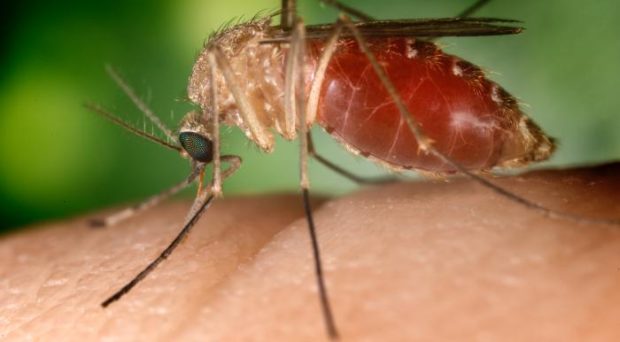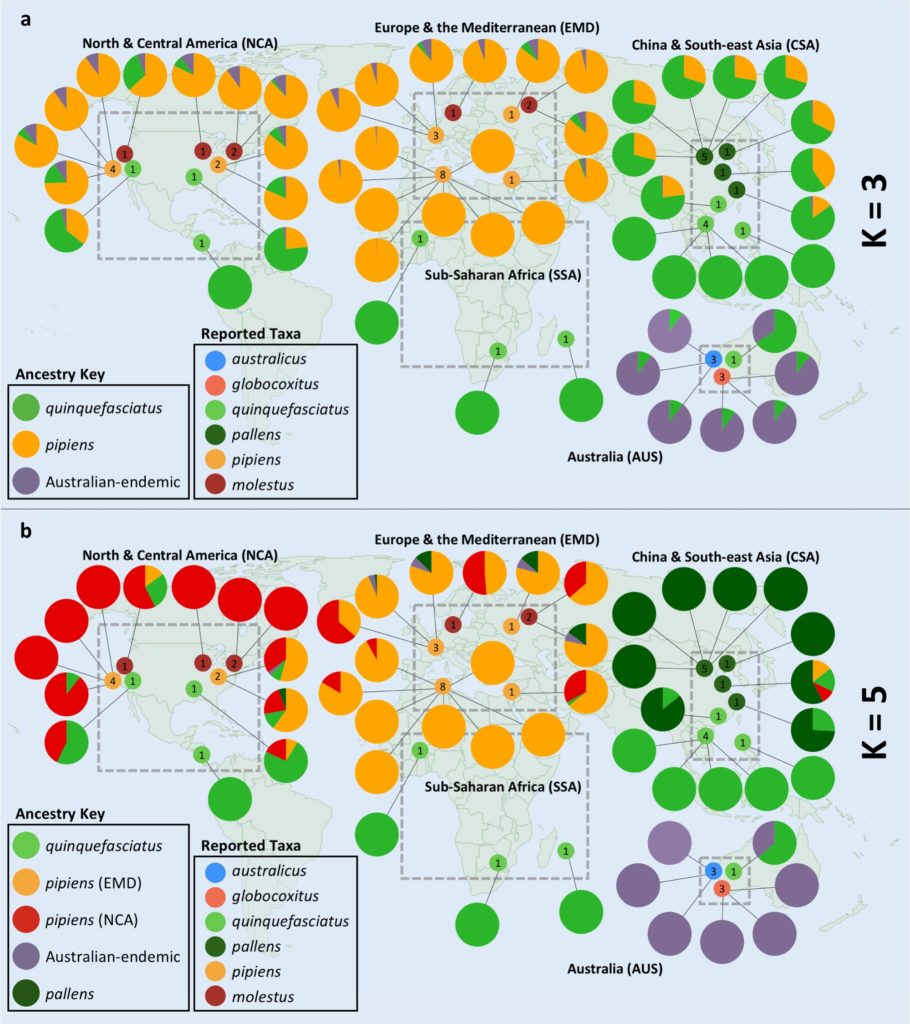
Historically, the use of morphological characteristics created many instances where single ‘species’ were described as having broad ecological and behavioral variation, including variation in host preferences.
With the advent of molecular tools for surveying mosquito diversity, it has become clear that much of the ecological and behavioral diversity observed within mosquito species correlates with multiple, distinct genetic units.
Accurate cataloguing of variation in relation to taxonomic diversity is scientifically vital as it can facilitate a better understanding of enzootic cycles and disease transmission to humans or domesticated animals. For this reason, it is also equally important to understand the evolutionary processes that create and shape mosquito taxonomic diversity.
One group of mosquitoes with challenging taxonomic designations are those in the Culex pipiens species complex.
Currently, most researchers consider there to be six distinct taxa within this complex although what each of these taxa represents is of greater contention. Here I will treat them as discrete species for simplicity.
These taxa include the cosmopolitan Northern (Cx. pipiens) and Southern (Cx. quinquefasciatus) House Mosquitoes, the urban adapted ‘London Underground Mosquito’ (Cx. molestus), a Northeast Asian endemic taxon, Cx. pallens, and two Australian endemic taxa, Cx. australicus and Cx. globocoxitus. The mosquitoes within this complex are major vectors of West Nile virus and St. Louis encephalitis, among other pathogenic organisms.
Recently, my colleagues and I used publicly available next-generation sequencing data taken from twelve different studies to examine for the first time the genetic relationships among all six members of the complex across their global distribution. In this study, we asked three specific questions:
1) How do the Australia endemic species relate to the other members of the complex?
2) Is the urban-adapted taxon Cx. molestus monophyletic?
3) Is the taxon Cx. pallens a distinct evolutionary entity or rather does it arise from contemporary hybridization between other complex members?

Using a combination of genetic clustering and phylogenetic analyses, we found clear evidence that the two Australian endemic taxa belong within the complex and most likely diverged from Cx. quinquefasciatus after the split between it and Cx. pipiens.
Our results also indicated that Cx. molestus from North America and from Europe are genetically distinct, and may have separate evolutionary origins. This result suggests that urban environments may have selected for the molestus-form in multiple locations independently and therefore that molestus is polyphyletic.
This finding contrasts with previous work that indicated Cx. molestus has just a single origin. However, our results also showed extensive genetic exchange among all members of the complex, and correspondingly the genetic signatures of evolutionary origins are obscured in these interbreeding populations.
Lastly, and perhaps most interestingly, we found that the taxon Cx. pallens harbors a distinct genetic signature across a broad geographic area in Northern China that reveals its hybrid origins. Samples showed a consistent ancestry that was comprised of approximately 70% Cx. quinquefasciatus genetic background and 30% of either Cx. pipiens or Cx. molestus genetic background.
The close genetic similarity of Cx. pipiens and Cx. molestus made it impossible to differentiate which was the more likely parental taxon with the Cx. pallens data available to us. In addition to a consistent signature of genetic admixture, the Cx. pallens samples examined also had numerous genetic variants not seen in any of the other taxa, suggesting that contemporarily it is a distinct evolutionary entity.
The possibility that new and distinct taxa can arise through hybridization remains contentious, although evidence is increasingly revealing that it can occur and form new, reproductively isolated species.
Although very suggestive, our data is presently insufficient to state that Cx. pallens is a true hybrid taxon. If it is of hybrid origin but now evolutionarily distinct, we are left with another question to resolve.
Specifically, Cx. pallens is found predominately in temperate locations of Northeastern Asia and adult females enter diapause during the cold winter months. The other two extant taxa in the Cx. pipiens complex found in Asia are Cx. quinquefasciatus and Cx. molestus, neither of which has an ability to enter diapause. If these two taxa historically hybridized to form Cx. pallens, it remains unclear how Cx. pallens developed its ability to overwinter in a diapause state. An alternative explanation is that hybridization between Cx. quinquefasciatus and Cx. pipiens originally formed Cx. pallens.
As Cx. pipiens does have an ability to diapause, this would resolve the mystery of where Cx. pallens obtained its diapause abilities. However, this hypothesis presents its own challenges as Cx. pipiens is not presently found in east Asia.
Additional research will be necessary to determine how consistent the signature of hybrid origins is throughout the geographic range of Cx. pallens, the extent to which it is reproductively isolated from other Culex taxa, and the origins of its diapause abilities.

Comments